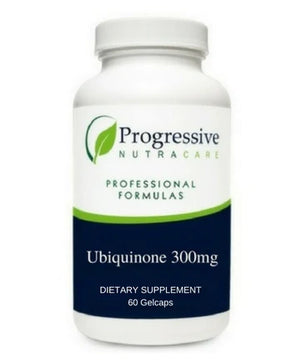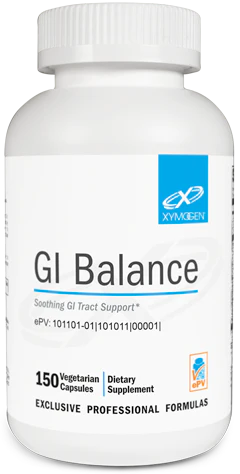Vitamin D Deficiency- You May Be More At Risk Than You Think!

Vitamin D is known as the “sunshine vitamin” because our body makes the vitamin when exposed to UV light. It’s critical to support bone health, aids in the absorption of calcium and phosphate from the gastrointestinal tract which reduces calcium deposits in unwanted areas and helps to transport calcium to bones and teeth where it’s needed. Growing research also shows the importance of Vitamin D in supporting cardiovascular function, blood sugar balance, musculoskeletal strength, Immune health and neurological function, and possibly helps to suppress development of various cancers (Manson, et al, 2017). Vitamin D3 is a fundamental nutrient that serves a vital role in our health. It assists in the absorption of calcium which is needed to prevent weak or brittle bones. Arthritis and osteoporosis are becoming more prominent and not just in the elderly population. We are seeing more cases of these diseases in children and young adults as well. Most fractures result in poor muscle function and vitamin D3 works to improve muscle strength.Vitamin D3 is highly known for its ability to increase immune function. Vitamin d3 creates over 200 microbial proteins that act to fight off infection and disease. Our daily lifestyle exposes us to many harmful disruptors and vitamin d3 is a powerful way to enhance these natural defenses.
Since Vitamin D is known as the sunshine vitamin, don’t we get enough of the vitamin from the sun? What about from food? Unfortunately, probably not. With concern for skin cancer rising, and our busy lives meaning we may not spend as much time outdoors, many of us don’t get enough sun exposure to create enough vitamin D. This is especially true of those that live in more Northern latitudes. For the body to be stimulated to produce vitamin D, it requires adequate exposure to UVB rays. Many people don’t know that UVB light does not penetrate glass, which means basking in sunlight while indoors or in the car doesn’t count. It is possible for tanning beds or special lights to help, but only if they emit UVB, and of course at extra expense and effort. Most Americans also don’t consume enough vitamin D in our diet. In fact, “92% of men, more than 97% of women, and 94% of people aged 1 year and older ingested less than the EAR of 10 mcg (400 IU) of vitamin D from food and beverages.” (NIH professional fact sheet on vitamin D) The fortification of milk with vitamin D has gone a long way to eliminate the childhood disease rickets, but as we leave childhood we tend to drink less milk, and not all other dairy products are fortified. Even though most of us aren’t at risk of the rickets and very severe vitamin D deficiency, being vitamin D deficient still can contribute to health problems, and increasing vitamin D consumption can help. Some populations, however, are more at risk than others for more substantial deficiencies in vitamin D and it's even more important for them to increase their vitamin D uptake. Since that uptake is difficult to get in food, and sunlight, supplementation is the answer. All of us could benefit from at least moderate vitamin D supplementation, but who is consistently at risk that should especially consider supplementation?
First up is the surprising rise in rickets in the world again, even in the United States and Western Europe. Although as was mentioned, most milk and some other dairy products are supplemented with vitamin D, a rise in length of breastfeeding among some populations, a rise in the use of more boutique dairy products that may not be supplemented in vitamin D, the use of milk alternatives, increased protection from the sun, and even patterns of custom and immigration have all contributed to the fact that rickets is once again on the rise. Remember that rickets results from a more severe vitamin D deficiency, meaning that many children may be moderately, if not severely deficient in the vitamin- which can still have health effects. Genetics can play a role as well. Children of African origin who are breastfed for longer periods of time seem to have a greater risk specifically for developing rickets, and more generally for being vitamin D deficient (Weisberg, et al, 2004). Regardless of race, babies that are breastfed are more likely to develop vitamin D deficiency and rickets as was borne out by a large Canadian study (Ward, et al, 2007). Other studies have shown that while rickets is increasing generally in the United States, it is among immigrants from Asia, Africa, and the Middle East that the increase is especially prevalent (Creo, et al, 2016). Although more serious vitamin D deficiency is correlated with breastfeeding, this by no means should be taken as a condemnation of breastfeeding. There are many, many health benefits for breastfeeding- consider this instead a plea for supplementation with vitamin D3.
While rickets is a childhood disease, among adolescents and adults a similar afflication can result from vitamin D deficiency- osteomalacia. Osteomalacia is essentially a condition of “weak bones” where the bones aren’t mineralized with enough calcium (which if you remember, vitamin D assists with). The effect is much like rickets: “similar to those of rickets and include bone deformities and pain, hypocalcemic seizures, tetanic spasms, and dental abnormalities” (Muns, et al, 2016). So aside from breastfed children, who else could be at risk for these afflictions? Another population that could be affected, on the opposite edge of the spectrum are older adults. Aside from osteomalacia, from severe depletion when they were younger, older adults are more likely to suffer from osteoporosis, which is where the calcium in the bones demineralizes. Again, sufficient vitamin D supplementation can help the vitamin D to preserve calcium in the bones. The elderly may also suffer from osteoarthritis, which can limit mobility and cause pain, also from demineralization. Aside from aging and its attendant calcium loss, vitamin D levels themselves can decrease as we age, partly because the skin becomes less able to create vitamin D from sunlight (Chalcraft, et al, 2020). We may also develop more sensitivities to the types of foods that are fortified with vitamin D as we get older, and consume less of it in our diet.
Pregnant women should also receive vitamin D supplementation: “Vitamin D supplementation during pregnancy in women with low vitamin D status may improve fetal growth and reduce the risks for small-for-gestational-age, preeclampsia, preterm birth, and gestational diabetes. Mothers with sufficient vitamin D levels have offsprings with less enamel defects and less attention deficit and hyperactive disorders and autism. All pregnant women should be supplemented with 600 IU/day of vitamin D3. We discuss evidence indicating that higher vitamin D doses (1000-4000 IU/day) may be convenient to achieve better maternal and infant outcomes. Low maternal vitamin D status during pregnancy may be associated in infants with a higher risk for lower bone mineral content, enamel defects and attention deficit hyperactive disorder.” (Faustino, et al, 2020). It seems clear that these are all outcomes best avoided. Liquid vitamin D3 can be easy to dose without creating any of the nausea that can come from swallowing pills.
Other groups that may be vulnerable to vitamin D deficiency include those whose jobs keep them inside all day; and those because of fair skin, religion or custom, or because of previous skin cancer experience cover themselves fairly fully from the sun (Sowah, et al, 2017). Conversely, those with darker skin have been found to have lower blood serum levels of vitamin D. Melanin decreases the skin’s ability to manufacture vitamin D. At the same time, people with darker skin seem to have less osteoporosis and other bone disorders, so the final effect on bone health is less clear (Brown, et al, 2018). There is always the possibility that other impacts of vitamin D deficiency could still be important, particularly when considering the breastfeeding data as applied to those of African or African-American origin.
Another set of people that should be concerned with vitamin D deficiency are those with gut issues, and separately, the obese. In the case of those with gut issues, many gut problems like celiac disease, Crohn’s disease, and ulcerative colitis make it more difficult to digest fats. Since vitamin D is fat soluble, people with these conditions have been found to have lower levels of vitamin D than is recommended (Pappa, et al, 2008). These same conditions may prevent someone from eating dairy, in some cases, which is most likely to be the source of vitamin D from its enrichment. In the opposite fashion, those who are obese may very well consume enough vitamin D, and absent other problems there is no reason that it can’t be created from sunlight on skin. The problem in this case is that since vitamin D is fat soluble, if there is an abundance of fat cells in the body, then vitamin D can be sequestered in fat cells in the body rather than made bioavailable for health. Those who are obese, or perhaps even overweight, may ve more likely to need to supplement with vitamin D than those that are not.
Vitamin D supplements and liquids come in two forms, D2 and D3. Both increase blood levels of Vitamin D, both seem to prevent the worst outcomes of deficiencies, but most evidence shows that D3 raises blood serum levels of Vitamin D to higher levels and sustains those levels for longer (Tripkovic, et al, 2012). This is even more true in the winter months (Logan, et al, 2013). Progressive Nutracare’s D3 liquid is a professional formula designed to be utilized properly in the body. Since D3 requires fat to be absorbed by the body, this formulation combines it with sunflower oil to survive stomach acid and allow absorption. Our specific formula, derived naturally from lanolin, provides a vitamin D3 cholecalciferol form that is a quality product that allows vitamin D to be utilized throughout the body. A number of vitamin D3 on the market use synthetic forms of vitamin D that are not optimal. Our D3 liquid also delivers 1,000 IUs per drop making it ideal for patients who need a high therapeutic dose in bioavailable form. Liquid vitamin D3 can be easy to administer to children, the infirm, and those who can’t handle pills as well. On the other hand, some prefer to take vitamin D3 in capsule form for its convenience in carrying and for travel. Progressive Nutracare D3 in capsule form offers the same benefits and quality of our liquid product. Assess your possible vitamin D status by taking a look at the evidence above. It’s likely that you could do with some supplementation.
*By including product links in this article, Progressive Nutracare is providing a reference to our readers to assist in searching and cataloging the site. These products have not been evaluated by the F.D.A. are not intended to treat, diagnose, cure, or prevent disease.
- Robert Thomas







Comments 0